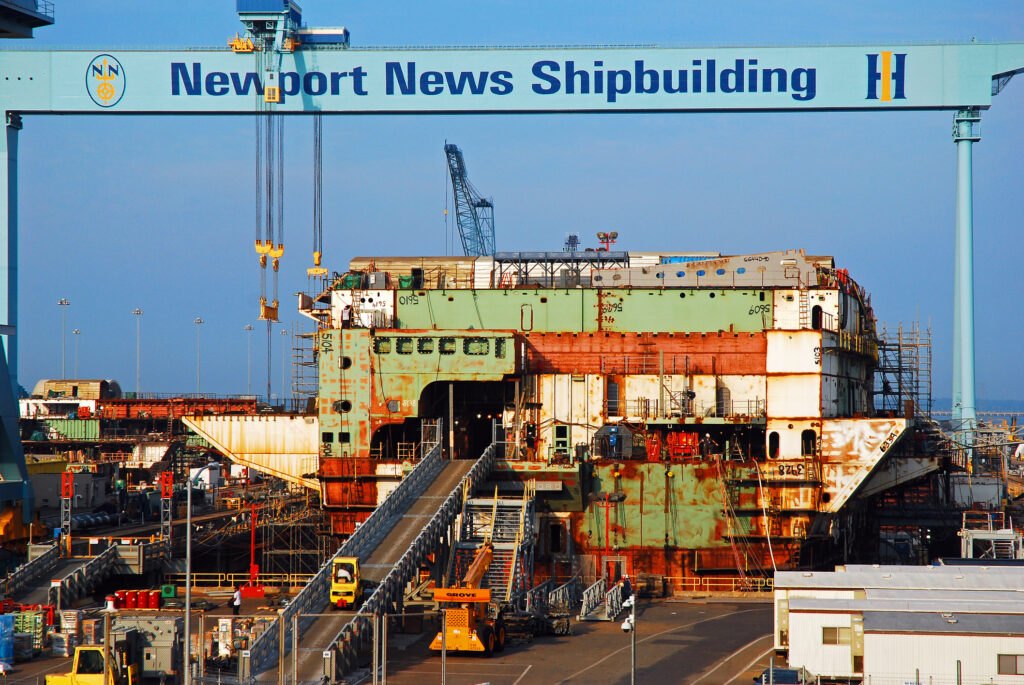
Shipbuilding in the United States has almost entirely disappeared, and that raises a number of national security concerns.
Sen. Tammy Baldwin (D-Wis.) introduced legislation earlier this week to expand Buy America preferences for the federal government’s purchases of ships, a step toward rebuilding the country’s once mighty – and now nearly nonexistent – shipbuilding capabilities.
The Made in America Shipbuilding Act would require all federal agencies to follow Buy America when purchasing all classes of ships. Buy America also would apply to the materials used to build the ship, like steel, iron, and aluminum, and all of the onboard components, like engines, valves, air circuit breakers, hoists and winches.
“For decades in Wisconsin, we’ve worked to make things: paper, engines, tools and ships. These manufacturing jobs have created shared prosperity for generations and strengthened the economic security of hard-working families across our state,” Baldwin said in a statement. “Strong Buy American standards drive local economic growth and create good paying jobs that support Wisconsin families. And because American workers are the best in the world, these standards also ensure that the federal government, including our military, purchases the highest quality ships and parts needed to carry out its various missions.”
Very little shipbuilding happens in the United States today. What does exist is mostly focused on building warships for the U.S. Navy or for ships that confine their operations to routes within the United States, which is required by the Jones Act. But the latter effort is small, consisting of only about 175 vessels, most of which are around 30 years old.
Baldwin’s office described the current Buy America requirements as “hodgepodge.” Different government agencies follow different requirements, and Buy America only applies to certain classes or ships or certain components. On top of that, the requirements that do exist can be waived due to things like cost concerns or schedule issues.
In practice, that has meant that the U.S. Navy’s Joint High Speed Vessel includes diesel engines made in Germany, South Korea or Finland, while icebreaking tugboats used by the Transportation Department contain Marine Deck Cranes imported from Italy.
Baldwin’s legislation aims to close the gaps and ensure that every federal agency that buys ships – from the Defense Department to the National Oceanic and Atmospheric Administration – abides by the same guidelines.
While Baldwin touted the potential economic benefits of the bill, it’s worth pointing out that there are also big national security implications because of America’s lack of shipbuilding. While the United States once led the world in making ships, the country’s shipmaking capabilities have significantly dwindled; just one-third of 1 percent of new commercial shipbuilding now takes place in the United States.
And when the federal government opts to buy foreign-made ships or components, it hurts what is left of America’s shipbuilding industry even further.
“Continued foreign encroachment on American manufacturers is not just a matter of economics; it’s a matter of national security,” said George Williams, CEO of the American Shipbuilding Suppliers Association, which is backing Baldwin’s bill. “The current process is decimating the American Shipbuilding Suppliers industry so much so that one day, the U. S. may be totally dependent upon foreign countries to defend our nation.”
Baldwin isn’t the only Member of Congress who has introduced legislation to increase shipbuilding in the United States.
A bipartisan bill put forth in 2019 by Rep. John Garamendi (D-Calif.) and Sen. Roger Wicker (R-Miss.) would require that vessels built in the United States transport at least 15 percent of total seaborn liquified natural gas exports by 2041 and 10 percent of total seaborne crude oil exports by 2033.
Although it seems like a relatively small percentage – just 10 percent (!!!) of crude oil exports – the requirement would bring a largely dormant industry back to life. Garamendi and Wicker said that more than 40 ships would be constructed under the requirements, creating thousands of good-paying shipyard jobs and strengthening America’s national defense at the same time.
The pair added that other countries, including Russia, already have similar requirements in place. Many countries also subsidize their shipbuilding industries.
“American shipyards and mariners are ready for the job,” Garamendi said. “Our bill ensures they are no longer expected to compete against heavily subsidized foreign shipyards in Korea, China, and elsewhere.”
Added Wicker: “Our geopolitical rivals have invested heavily in their shipbuilding capacity, and the U.S. should keep pace.”
